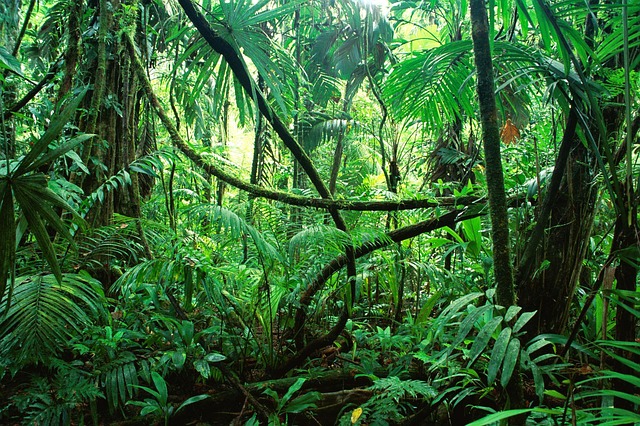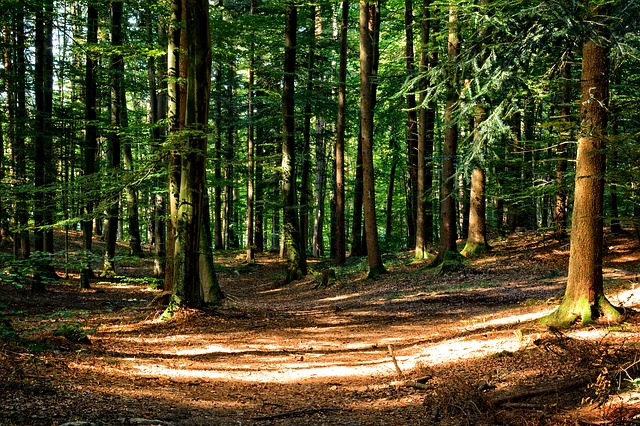Difference Between Jungle and Forest
A number of people may think a jungle and a forest are the same. This makes a lot of sense as jungle is a Hindi word that actually means “forest”. The word was only incorporated into the English language via European explorers’ interaction with pertinent territories such as India. At present, a jungle is mostly defined as a part or a type of a forest. Both jungle and rainforest are home to valuable flora and fauna which vastly support human life.
What is a Jungle?
Before the 1970s, jungles were basically understood as tropical rainforests as it was mainly attributed to the European colonial or exploratory pursuits of countries which they perceived as “unruly” or “less civilized”. The common understanding is that a jungle is an area covered with thick vegetation which primarily consists of trees.
The following are the different ways on how “jungle” is commonly used and understood:
-
Impenetrable Vegetation
Jungle is often pictured as land with overgrown and tangled shrubs, trees, and vines. It is a foliage which is highly difficult for humans to traverse that they have to cut their way through.
-
Rainforest
Prior to the 1970s, the term “jungle” was largely used to denote tropical or moist forests. Most authors attribute this to how early European explorers traveled via rivers which were largely lined with thick vegetation. Hence, many writers describe relevant Asian or African areas as “jungles” while natural vegetations in America and Europe are termed as “forests”.
-
Savageness
In popular culture, “jungle” is also metaphorically utilized to denote savageness or lawlessness. It is commonly associated with the phrase, “survival of the fittest” as it refers to a place largely dominated by intense competition and fierceness. For instance, center cities are often dubbed as “urban jungles” due to the struggle involved in surviving in a highly individualistic culture.
What is a Forest?
The forest is commonly understood as a woodland as it is usually pictured as an expanse covered with trees and underbrush. It accounts for as much as 80% of the planet’s biomass as it incorporates any land area dominated by vegetation such as savannas, jungles, and hunting grounds.
The following are the divisions of a forests’ vertical layers starting from the ground level:
-
Forest floor
The forest floor is the lowest layer where decaying matter and animal droppings are mainly found. With its rich soil, other organisms such as mushrooms, seedlings, and ferns are nourished.
-
Understory
Being the second lowest layer, the understory is composed of young trees, shrubs, bushes, and other greeneries that thrive under the protection of the canopy.
-
Canopy
The canopy functions as an umbrella to the lower parts of the forest as it is made up of the upper parts of tall trees, tangled branches, burly vines, and robust leaves. It receives much sunlight and is the most productive portion of the trees.
-
Emergent Layer
As its name suggests, this is the top most layer consisting of several “emerging” trees from the canopies. This is typically found in rain forests where scattered trees tower over the majority of the foliage.
Difference between Jungle and Forest
-
Etymology
Forest came from the late Latin, “forestis silva” which literally means “wood outside”. It then evolved to its present term which was understood in Middle English as “wooded area kept for hunting”. As for jungle, its origin came from the Sanskrit word “jangala” which translates to “rough and arid (terrain)”.
-
Density
As compared to a forest, a jungle has a denser vegetation as it is largely impenetrable.
-
Size
Forests occupy very wide areas of land. On the other hand, jungles mostly inhabit only 20% of the forest expanse.
-
Sunlight
As jungles are denser, less sunlight can go through the canopies as compared to forests.
-
Variety of Vegetation
There are more species in a jungle as compared to a forest. For instance, jungles contain short and tall trees, different vines and lianas, a variety of herbs, and diverse flowers. As for forests, they mostly contain trees with more uniform species.
-
Types
There are different kinds of forests such as temperate, rainforest, Mediterranean, and coniferous while a jungle is a type of a rainforest.
-
Location
Forests are generally located in areas which can sustain tree growth while jungles are often situated at the edges of forests.
-
Animals
Forests are basically home to animals like deer, bears, squirrels, rabbits, and possums. On the other hand, the jungle is mostly associated with animals such as monkeys, snakes, and crocodiles. It is very likely that there are more undiscovered species in the jungle as it poses more danger and challenge for explorers.
-
Moisture
As compared to forests, more moisture is associated with jungles as they are found along rivers and often described as damp and dense.
Jungle vs Forest: Comparison Table
Summary of Jungle verses Forest
- The words “jungle” and “forest” are often used interchangeably.
- A jungle is a type of a rainforest.
- Jungle came from the Sanskrit word “jangala” which means “rough and arid”.
- Forrest came from the Latin word “forestis silva” which means “wood outside”.
- A jungle has denser and damper vegetation. Hence, less sunlight can penetrate it.
- As jungles are generally harder to explore, it may have more species which are yet to be discovered.
- Difference Between Hematoma and Melanoma - February 9, 2023
- Difference Between Bruising and Necrosis - February 8, 2023
- Difference Between Brain Hematoma and Brain Hemorrhage - February 8, 2023
Search DifferenceBetween.net :
Leave a Response
References :
[0]Aloinan, Molly and Kalman, Bobby. A Rainforest Habitat. New York: Crabtree Publishing, 2010. Print.
[1]Haskell, David George. The Forest Unseen. New York: Penguin Books, 2013. Print.
[2]Maslow, Jonathan. Footsteps in the Jungle. Chicago: Ivan R. Dee, 1996. Print.
[3]Image credit: https://pixabay.com/en/the-jungle-of-chiapas-1865639/
[4]Image cresit: https://pixabay.com/en/forest-mixed-forest-autumn-rest-972792/



